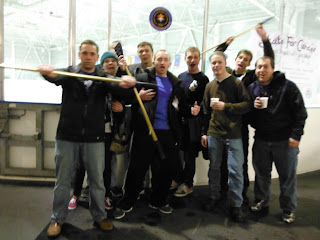This past semester, I took a class called Social Recreation Leadership. In this class, we learned about different styles of leadership that could be used in leading activities. My professor has taught this class for 25 years, and these are his guidelines for leading activities. This post is the second of five posts for leadership guidelines.
These guidelines are not intended
to work in all situations. Guideline application requires leadership. You must
decide what activities to use in different conditions. Leaders must be alert to
potential problems and adjust quickly. Maximum fun and participation in a safe
environment is the goal.
Leadership Techniques
Match techniques to your
personality and use what works for you.
- Have one person in charge at a time. All other helpers/staff should support the leader.
- Let activities do most of your talking and help place participants in the formation you want.
- Try the activity out in advance. Practice and be prepared.
- Use demonstrations where needed. Seeing clarifies and shortens explanations.
- Play the game a few times just for fun to shorten the explanation. A picture is worth a thousand words.
- In elimination games (which we use sparingly), play without elimination the first few times so no one gets out too quickly.
- In games with magic, riddles, guessing, etc., find out before you start who has played it, and ask them not to give it away so the others can enjoy it. The games can end too quickly if someone gives the answer away too soon.
- If the game is too difficult, the participants will lose interest fast. You may have to adjust the rules.
- Find a balance between being strict and lax on the activity rules. You can be extreme either way. Watching the 'fun' element will tell you which way to go.
- Prepare equipment prior to the event to eliminate people standing around while you are setting things up.

Improving Your Leadership Ability
- Read and study
- Plan and prepare
- Watch and work with others
- Practice, practice, practice
What Makes a Great Social Leader
- Involves everyone in a positive, uplifting way. Everyone has fun – everyone is important – everyone belongs.
- Uses lots of clapping, standing ovations, spot-lighting of people, teamwork, etc.
- Uses games to do the talking
- Uses lots of energy and enthusiasm
- Takes command
- Thinks of himself/herself as a “game show host”
- Exaggerates with hands, arms, and voice (loud and strong); uses body gestures, animation, etc.
- Is the example of having fun and smiles even if you do not want to
Master of Ceremony and Entertainment
There are
many styles of MC’s. Use what works for you and your personality.
- Think of yourself as a game show host
- Incorporate leader’s stunt, magic trick, puzzle, crazy song, brain teaser, group stunt, skit
- Involve the audience
- Choose people from the audience for entertainment – the higher in authority the better, but be careful not to embarrass too much. Choosing several people rather than one reduces the chance of too much embarrassment. Skits work great because they involve several people.
- Use jokes
- Use lots of standing ovations, high fives, etc.
- Be a little crazy
- Have high energy and enthusiasm
- Use candy, story telling, etc.
Fantastic Leadership Tools
- Music – as an energy boost or mood setter; timing is the key; music should not be continuous
- Candy – an attention getter, and it quiets a noisy group
- Water – adds excitement and suspense
How to be Seen and Heard by All
- Mass formation
- Stand in front of group
- Elevate yourself by standing on a chair, etc.
- Circle
- Blend within the circle rather than in the middle of the circle
- Lines
- Stand where most can see you
How to Lift and Build Participants and Remember Names
- Use lots of high fives, standing ovations, etc.
- Spotlight people as the MC. Be sensitive to embarrassment.
- Use people’s names often, in games, announcing, etc.
- Use 'get-acquainted' or name games
- Use name tags
- Take group pictures


No comments:
Post a Comment